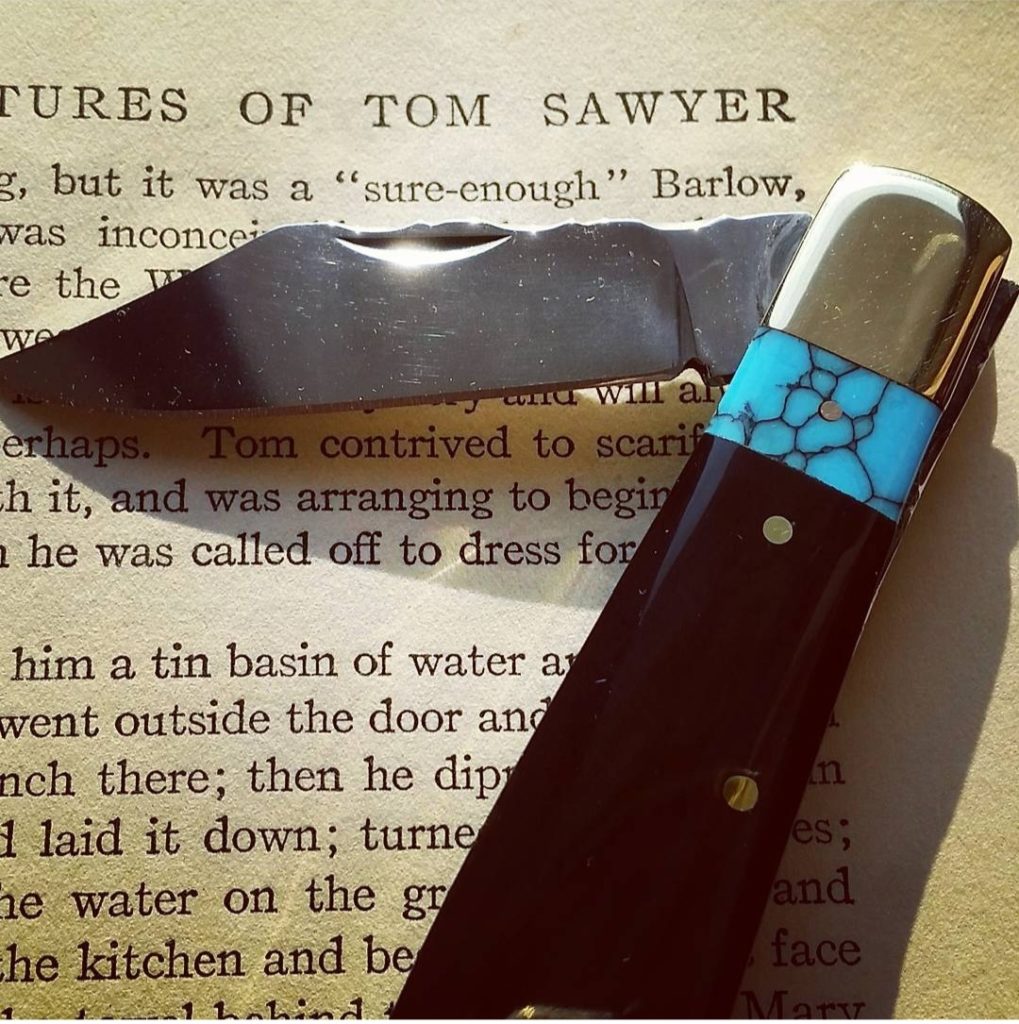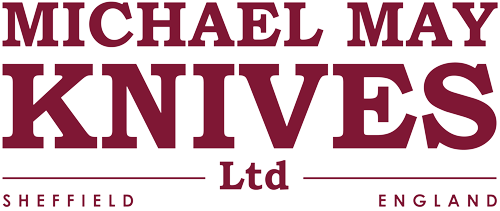Sheffield, like Rome, is built upon seven hills. It is the minerals within these hills that Sheffield’s cutlery industry was able to prosper. The coal deposits, known as the Barnsley Seam, and the iron ore was worked and mined there from the twelfth century onwards. Add to this combination the local bedrock, millstone grit, a stone perfectly adept for grinding stones, skilled workers had everything they needed to make cutlery. The seven hills ensured several fast-flowing waterways passed through the valleys and enabled water wheels to power the machinery necessary for grinding. In the fourteenth century, the cutlery of Sheffield was already becoming noteworthy. Chaucer made his reference in the Canterbury Tales when he said that the Miller of Trumpington carried a ‘Sheffelde thwittel’.
In 1670, Obadiah Barlow of Stannington (one of Sheffield’s seven hills) designed a folding pocket knife with a characteristic large bolster. It was Obadiah’s grandson, John Barlow who subsequently developed the knife as a low-cost export to America. By the nineteenth century, Sheffield’s knives were frequently mentioned in American literature, testament to the popularity and quality of the knives being produced in Sheffield . In The Pioneers by D. Fenimore Cooper (1853), a book based on the author’s own experience of growing up in a town of the American frontier. The Barlow knife is mentioned in the list of essentials purchased by Monsieur Le Quoi. He ‘made some purchases, consisting of a few cloths; some groceries, with a good deal of gunpowder and tobacco ; a quantity of iron ware, among which was a large proportion of Barlow’s jack-knives, potash-kettles, and spiders…’
Mark Twain was a fan of the Barlow knife. In both The Adventures of Tom Sawyer and The Adventures of Huckleberry Finn (1885), Twain pays tribute to the knife. In Tom Sawyer, a book set in a Mississippi town and deals with issues that Twain dealt with as a youth.
‘Mary gave him (Tom) a brand-new “Barlow” knife worth twelve and a half cents; and the convulsion of delight that swept his system shook him to his foundations… it was sure enough a Barlow, and there was inconceivable grandeur in that.’

In Huckleberry Finn, Huck and Jim’s voyage on their raft led them to a house on an island where they discovered the body of a man. Looking through a window they decided to look around the house and see what they could scavenge. ‘we got an old tin lantern, and a butcher knife without any handle, and a bran-new Barlow knife worth two bits in any store’. Even Abraham Lincoln (1809-1862) carried a Barlow knife. He was presented a Barlow knife by a stranger who was authorised by the community to give the knife to someone ‘more homelier’ than himself. Upon meeting Lincoln he presented the knife and said ‘sir… you are fairly entitled to the testimonial.
Herman Melville’s Moby Dick (1851) gives further praise to Sheffield with a name check to Joseph Rodgers and Sons’ razors. During the same year as Joseph Rodger’s and Sons were getting their gold medal prizes at the Great Exhibition, Queequeg was shaving on the whaling boat using ‘Roger’s (sic) best cutlery with a vengeance’.

Recent Comments